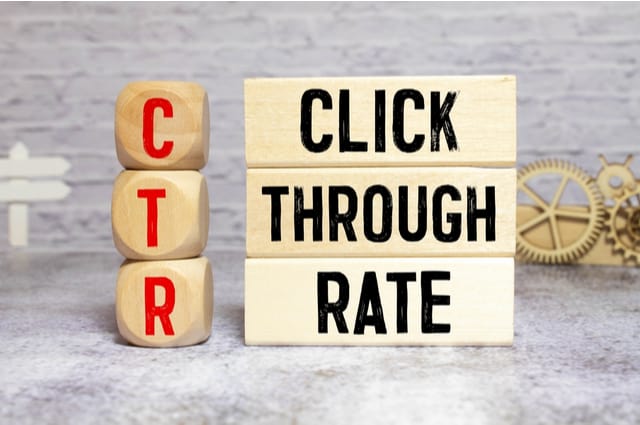Sales Prospecting & Sales Strategies: How Important is it for businesses?
Prospecting is the method of discovering potential clients. Before starting a sales conversation with a prospect, a sales representative must first identify them.
How to discover prospects and what is prospecting?

Identification of prospective clients, often known as “prospects,” is the first step in the sales process.
The aim of prospecting is to create a database of potential customers and communicate with them regularly in the hope of turning them from potential customers into existing customers.
Prospects are discovered rather than searched for. To convert a prospect into a customer, you must start a sales discussion with them after you’ve identified them.
Sales managers should consider what kind of prospecting approach will best assist them in achieving their objectives.
You must begin with a lead. A lead is a person or business for whom you already have their contact details. Research is typically done to find them.
You must engage a lead once you’ve located them. Engaging communication involves explaining what you are doing and why people should care.
Finding prospects can be done in a variety of ways, including cold calling, social media marketing, word-of-mouth, trade exhibits, events, etc.
The kind of goods or services that salespeople sell should also be taken into account. For instance, if you sell software, your primary audience may be IT professionals. Small businesses could be your target market if you offer financial services.
Historical Background

The term “prospector” originally referred to those who searched for gold by visually inspecting river beds as well as rock formations. The prospectors would spend time sifting through the dirt after spotting gold particles to find the rich nuggets as well as flecks that were left often when dirt washed away.
Today’s sales prospectors comb through lengthy lists of potential clients in an effort to find individuals who seem to be interested and prepared to make a purchase.
Components of the Sales Process
If a person has not yet done business with you, it’s only a speculation that they could be keen on your services and goods.
At that stage, they are potential clients and can be classified as suspects or prospects. There is a difference between the two groups:
Suspects
People or organizations who you think would require your goods or services but aren’t necessarily aware of your company or what it offers. They might end up as clients, but you’re not sure.
To find out, you must increase their knowledge of and engagement with your company. Once they are informed, it is time to decide whether they might make a purchase later on.
Prospects

Prospects are people you’ve contacted who have indicated they could be interested in purchasing from you in the future. For instance, if they are aware of it, the owner of a luxury car with 100,000 kilometers and 14 years old could be a hot possibility for your auto business.
Or the spouse of a woman approaching her 30th birthday might be a prospect for your jewelry store if you let him know where the shop is and encourage him to go there—perhaps by offering him some rewards.
A prospect who makes a purchase from you is considered a customer.
Prospecting Tactics
There are a variety of well-liked methods and techniques you can employ to get in touch with sales suspects, or purchasers who may or may not be potential clients for your company, including:
- Calls are made with the intention of starting a conversation with the person who picks up the phone.
- Automated voicemail messages are made to try to urge the person who hears them to do anything to find out more information, like going to a website or making a phone call.
- Email is used to communicate information and persuade recipients to do something that will mark them as potential customers.
- Direct mail is information shared through the mail in the form of flyers, postcards, or catalogs, for example, in an effort to persuade you to consider purchasing.
What distinguishes a prospect from a lead, contact, and opportunity?
Prospect, lead, contact, as well as opportunity are the four most frequently used terms in sales. Despite their frequent interchangeability, each term has a unique meaning that pertains specifically to the sales process.
- What precisely are a lead, prospect, contact, and opportunity then?
- How do you use each word? What does it mean? And how are they different?
- We simplified everything so that everyone could comprehend it.
Defining the terms opportunity, contact, lead, and prospect.
It is best to consider how the terms lead, prospect, and opportunity fit into the broader sales process and how they relate to other terms, like contact and contract, before examining their particular meanings.
Describe a prospect.
A sales prospect is, to put it simply, a person who might buy your good or service. A prospect hasn’t started the sales process or interacted with your business yet, though.
A prospect is essentially someone who belongs to your total addressable market, meets your ideal client profile, has the resources to buy, but hasn’t been actively courted.
Describe a lead.
A prospect who has effectively interacted with the content or sales procedure of your business is a sales lead.
Leads are potential customers who are familiar with your business, have read some content about your goods or services, and have reached the top of your sales funnel.
Describe a contact.
The following step in your sales process is a sales contact.
A lead becomes a contact if they interact with your sales content, potentially chat with one of your sales representatives, and indicate an interest in buying your product.
What exactly is an opportunity?
A sales representative should qualify a contact when they interact with your sales team and exhibit interest. A sales contact becomes a sales opportunity after it is established that they are a qualified contact who would become a good customer.
The account executive who is attempting to gain their business then gives them their undivided attention. There may be several contacts within a given opportunity.
The distinctions between opportunities, contacts, leads, and prospects are numerous.

Each phrase describes the particular stage of the sales funnel that the subject is currently in. A specific person is given different names as they advance through your sales process to denote their level and position.
Contact is always a qualified consumer, but somebody at the top of the funnel is always a prospect.
Each person may be treated differently by sales and marketing, since each phrase denotes a distinct stage of the sales process.
The degree of personalization should rise as a prospect progresses from being a prospect to becoming a contact, opportunity, and/or opportunity.
Automation is utilized to reach broad segments of clients with a personal touch because you probably have more prospects than contacts, but it should be avoided when dealing with individual customers.
A CRM can assist you in striking the correct mix between automation and personalization in this situation.
You may handle customer segments from a single location rather than delivering the identical message to every contact.
Keep track of each contact’s needs so you can give them value when it matters most.
For instance, if a lead brings up a certain difficulty during a sales call, you may offer new content that offers pertinent insights, positioning you as a trusted advisor in the process.
How to use an opportunity, contact, lead, or prospect?
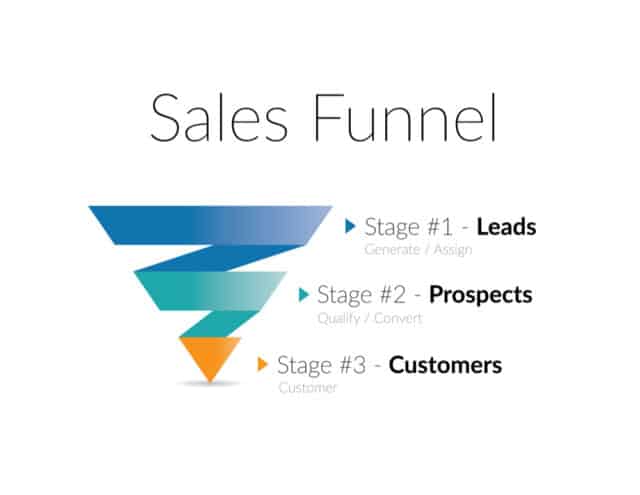
Let’s think about the journey of a fictitious customer named Jenifer to more clearly show the progression.
A prospect…
Customer Jenifer begins as a candidate. In Salesforce, it can just be a name, business, and phone number. She might be on a list that your team obtained from a trade show, webinar, sales intelligence tool, LinkedIn, etc.
Although Jenifer may have never ever heard of your business, your staff has identified her as a possible customer.
Becomes a lead…
After opening a few of the emails that your marketing team sends to Jenifer, she visits your website, completes a form, and downloads some content.
She is now a lead, in actuality.
She is a target for more involved outreach from your sales staff, such as cold calls or private emails.
Becomes a contact…
When one of your sales representatives calls, Jenifer answers.
They have a fantastic conversation, and Jenifer goes above and beyond to meet the criteria for a customer, maybe even showing interest and/or some buying signs.
Jenifer gains eligibility as a contact.
Made part of an opportunity…
Your sales representative determines it would be better to pursue a contract with Jenifer because she is qualified and interested in purchasing.
Jenifer is regarded as becoming a part of an opportunity.
What makes sales prospecting crucial?
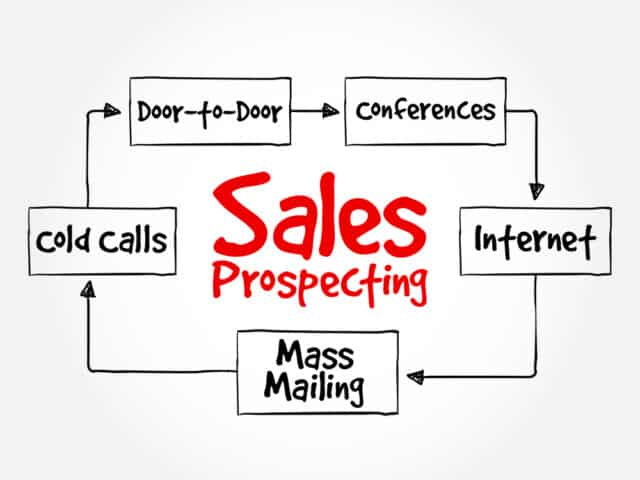
Any sales process must begin with prospecting. You should first discover your prospects before you can persuade them to buy your goods or services.
You might not be closing enough business if you aren’t prospecting enough. Actually, customers frequently engage in sales prospecting. More than 70% of buyers expect feedback from sellers early in the buying cycle.
Of course, salespeople don’t always feel that way. According to Gartner, it typically takes eighteen dials to reach a customer.
Additionally, only approximately 25% of sales emails are viewed. If you aren’t getting any leads, it might be time to reevaluate your strategy.
Even if you aren’t getting results immediately, you still need to keep a watch out for chances. Prospecting involves more than just making cold calls; it also entails networking and maintaining contact with possible clients.
What distinguishes lead generation from sales prospecting?
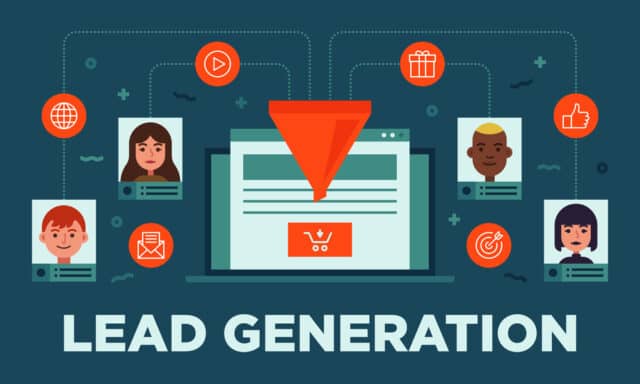
Lead generation is primarily the responsibility of marketing. They want to produce content and an online experience that draws in leads, such as blogs, advertisements, videos, webinars, and gated content.
An ebook or whitepaper for business professionals may be produced by a B2B company’s marketing department.
Visitors to the website must provide their name and email address on the contact page in order to view the material.
Marketing will evaluate each lead (i.e., decide whether it is worth pursuing) and then forward them to sales using a lead scoring model.
The salespeople are then given sales-qualified prospects to follow up with. Lead scoring is a key element in marketing automation.

Someone who expresses interest in your goods or services is referred to as a lead. Then, leads are assessed based on a variety of variables, such as their online activities, social media strategy, and other variables.
A qualified lead is added to a sales team member’s queue once it has been determined that it is qualified. Deals must be closed and leads must be turned into clients by sales teams.
A person who looks for potential clients online is known as a sales prospector. You search for information when you use the internet. Sales prospectors are seeking information about possible customers.
They could use social networking sites like Instagram, Facebook, or Twitter to find leads.
Or they might search on Google or LinkedIn for individuals who are currently employed by the businesses they want to sell to.
They will contact them via mobile, email, or text once they have a lead.
At what stage of the sales process does prospecting occur?

Lead generation takes place when you first begin your sales career. You must ascertain the issues that your potential customers are facing before attempting to address them.
When a lead is found, you must assess it to see whether it is worth following up on. Then you must offer them your solution.
The sales reps talk about the conditions with interested customers. The sales reps send the prospect an offer after resolving concerns about cost, terms of payment, and the availability of features.
The proposal serves as the basis for further discussion. The salesperson’s objective at this point is to persuade the potential customer to accept the offer.
The salesman will send the prospect a formal contract if they accept the offer. The contract is now formally won or lost by the salesperson.
If the salesperson succeeds, they should follow up with the customer to make sure they are pleased with the service and merchandise.
If the salesperson fails, they should look for reasons why the customer wasn’t pleased before figuring out how to make their subsequent pitch stronger.
Comparing inbound and outbound sales prospecting
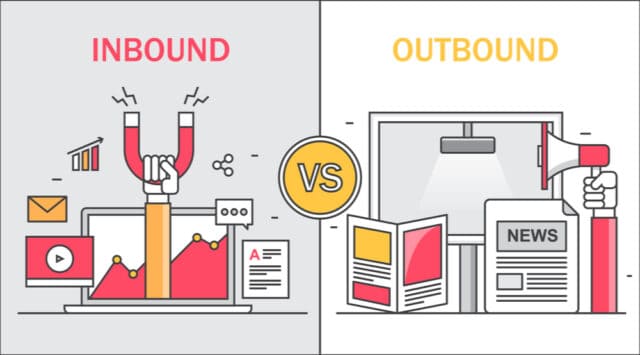
You have two options: either go outward and reach out to potential customers, or go inbound and provide engaging content that draws viewers.
You must stand out in any case. You can use a variety of tactics to advertise your company online. Paid advertising, organic SEO, influencer marketing, social media marketing, content marketing, and email campaigns are some of the most effective strategies.
Inbound and outbound lead-generation tactics are frequently separated into these two groups.
Through internet platforms such as social media, blog posts, websites, etc., inbound marketing aims to draw in new clients.
Any form of marketing activity that involves getting in touch with current clients is referred to as outbound marketing.
You can generate leads through a range of business strategies. For instance, you might develop a promotion that offers a free report in exchange for someone subscribing to your newsletter.
Cold emailing and cold calling

Making an unauthorized phone call to a stranger to try to sell them something is known as “cold calling” and is a type of sales prospecting.
Sending an unsolicited email to a stranger is known as “cold emailing.” Cold emails, which are emails sent to individuals who have never experienced business with your company, are common.
The CEO, CMO, CFO, and other executive positions are frequently targeted in these emails. Always begin with a customized subject line when pitching to a senior executive.
Personalization increases click-through rates and aids in navigating filters. These emails are quite popular and frequently include a link to a landing page.
Web pages called “landing pages” are created to entice visitors to submit a form or click through to another website.
Prospecting on social media

Social media marketing is a powerful tool for spreading your message. It makes it possible for you to interact with potential consumers and clients in ways that weren’t previously practical.
Social media sites like Facebook, Twitter, Instagram, LinkedIn, YouTube, Snapchat, Pinterest, and many others are excellent venues to advertise your business and your services.
Links to your website, blog entries, product pages, and other pertinent information can also be posted. By doing this, you will broaden your consumer base, raise brand awareness, and improve traffic to your website.
Missed quotas occur when you don’t prospect properly. Your sales team will thus become very unhappy and frustrated, which will make them behave badly toward clients.
Social media is a place where people frequently share their ideas and private information, which you can use to qualify leads.
For instance, you could get in touch with someone to congratulate them on their new position if they post something about getting a promotion at work.
After observing that, you may approach the potential employee and inquire about the kinds of employment prospects they are seeking.
Using social media to engage with customers who are really enthusiastic about what you have to offer is known as “social selling.” Several of the social networks will allow you to contact them.
Developing Your Sales Prospecting Method

Prospecting takes up 40% of the time that salespeople are working. As a result, if you aren’t doing it correctly, you could be passing up hundreds of chances each month.
When you want to regularly find qualified leads, prospecting systems are crucial. You may avoid wasting time following bad leads by using a solid sales prospecting strategy.
Set aside time each day to prospect. When you anticipate your prospects will be accessible, try to plan your prospecting around that time. If you’re unsure, just choose a time that suits you the best.
Tips for Sales Prospecting

Prospects ought to be prioritised according to importance. You may stay informed about what they’re doing by following their Twitter account or subscribing to their blog.
You may accomplish more in less time by batching prospecting sessions. For follow-ups and deal closings, email as well as phone communication are crucial.
Use an appropriate blend of email and phone interactions.

Use email to establish first contact with a prospect. It isn’t necessarily the most efficient way to conduct business, though. When compared to emails, phone calls have a greater response rate. Emails are also less personal.
When you send emails to someone, you are communicating with them via your company name. You might even hear back from a different division of the same company.
If you phone a prospect, you will most likely talk with them personally. When you call a prospect, you are building a direct connection with them and expressing interest in the product.
Email Communication’s Benefits and Drawbacks

Emails may be distracting and difficult to read. They are frequently sent when you are not anticipating them and may not always be responded to immediately. Emails are readily forwarded to other key recipients. We may need to follow up many times before receiving a response.
The Benefits and Drawbacks of Phone Communication

Because calls are less prevalent than emails, they might capture your prospect’s attention more quickly and easily.
Some prospects might be scared off by a phone call, which would make them less likely to consider a suggestion or arrange a second meeting.
Calls might be perceived as invasive and can result in an instant connection. Calls, on the other hand, can be more timely than emails and can shorten the time it takes to finalize business.
There is no guarantee that a potential customer will answer the phone. Depending on volume, voicemails might be just as crowded as emails.
Conclusion

Sales prospecting is an important aspect of selling. Whether you operate with a small team or a huge corporation, you must find prospects who are eager to purchase your product or service.
Before making a pitch, you should also qualify them. These two operations both greatly depend on data.
You may target prospects with suitable communication by using data to construct a profile of each one.
You will be willing to spend less time cold calling and more time closing business as a result. Your sales prospecting technique should be consistent with your sales process.
You must identify the most qualified prospects for your products and services. Then you must decide when is the optimum moment to contact those prospects.
Finally, you must develop an effective message that will connect with them.
A crucial part of any sales process is prospecting. It assists you in identifying possible leads, understanding your consumers’ wants, and determining whether there is a connection between your product and what they require.
Prospecting, when done right, may help you locate the best prospects, get them enthused about your solution, and complete sales faster.
You’ll be willing to concentrate more on the right kinds of leads and spend less time looking for dead ends.
Subscribe to our Newsletter
Sign up to receive email updates on new product announcements, exclusive sales and marketing content, special offers on email validation plans, and more.
We send curated content as per your preference and do not indulge in spam!
What would you like to know about
We’re committed to your privacy. TuxMailer uses the information you provide to us to contact you about our relevant content, products, and services. You may unsubscribe from these communications at any time. For more information, check out our privacy policy.


